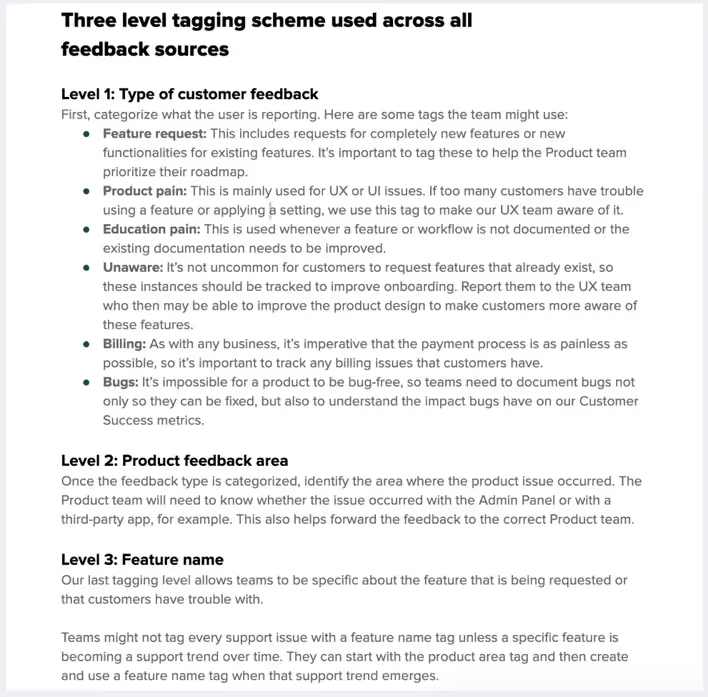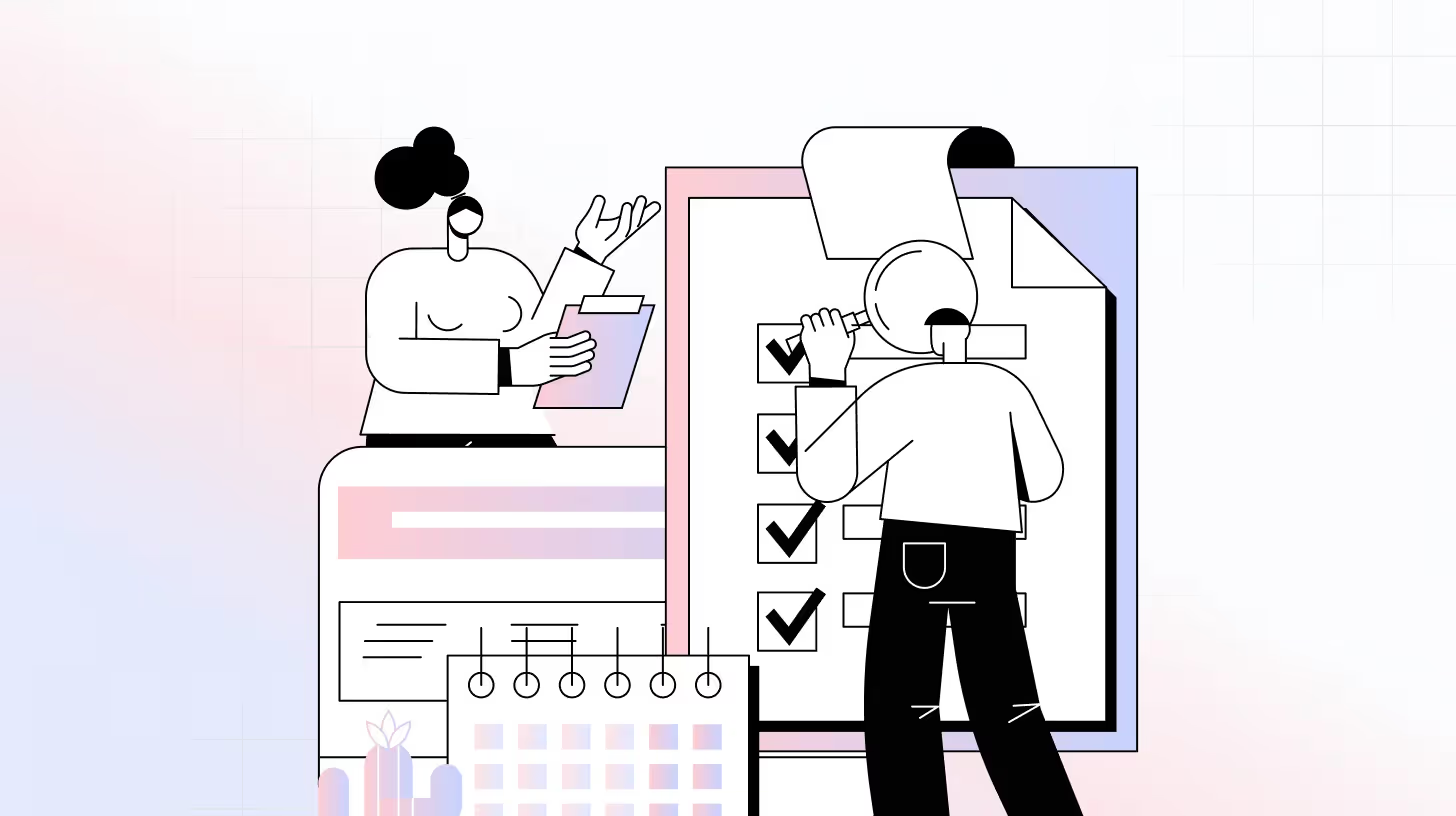 Blog
Blog How Customer Marketing and Customer Success Work Together
How Customer Marketing and Customer Success Work TogetherHow Customer Marketing and Customer Success Work Together

This article is part of our Perspectives in Customer Success series where top Success leaders share how they’re building, coaching, and scaling world-class teams.
Marketing departments have recently focused some marketing programs on engaging existing customers. These programs were quickly renamed “Customer Marketing,” and that’s about as far as we’ve come defining this important function. The result: different implementations at every company, unclear success metrics, failed programs, making it difficult to align customer marketing with overall customer success strategy.
My degree is in Journalism and Marketing. I’ve worked on the Marketing side in PR and social and also on the Customer Success side of things. So while I’ve always been customer-facing, I also have a marketing background that’s helped me identify this major gap that so many companies experience. They pour energy into marketing to potential customers but then neglect their existing ones.
Now, as the Head of Customer Engagement at Typeform, I’ve helped build a Customer Marketing team within our Customer Success function from scratch. We’ve improved how this team works over time and with each new hire; so here, I’ll share how this team is structured, how they work in general and with Marketing, and how we measure the team’s success.
Note: The team is formally called Customer Lifecycle Marketing, so I’ll call it that from here on.
Customer Success Strategy: How It’s Structured at Typeform
Typeform’s Customer Success group includes four teams: Support, Education, Lifecycle Marketing, and Customer Outcomes. I lead the two proactive teams: Customer Lifecycle Marketing and Customer Outcomes.
“Customer Outcomes” is our name for the Customer Success Management team. Since the whole Customer department is called Customer Success, we had to come up with a different name for the CSM team, and we took inspiration from Gainsight that also calls their CSM team Customer Outcomes. I think that's an even better fit. CSMs exist to help customers reach their desired outcomes, and the name “Customer Outcomes” reflects that.
Now, compared to other functions in a company, Customer Success can often have the deepest understanding of the customer from their 1:1 interactions (the group that can have a more thorough understanding of the customer is the Data and Strategy team, like the one we have at Typeform). Still, Customer Success is the group solely focused on the customer. They have rich insights about the attributes, behaviors, and processes of the most successful customers. That’s why it makes sense to have a customer-focused marketing team embedded in Customer Success—this is the heart of customer marketing customer success alignment.
Customer Lifecycle Marketing vs. Lifecycle Marketing: Shared Goals, Separate Metrics
Customer Lifecycle Marketing and Lifecycle Marketing work closely but have different objectives
At a high level, Lifecycle Marketing is focused on new business and Customer Lifecycle Marketing is focused on retention and expansion. When a user or company becomes a customer, the Customer team is responsible for everything from onboarding through the rest of the customer lifecycle.
What Customer Lifecycle Marketing is responsible for
Customer Lifecycle Marketing is focused on retaining and growing the customer base. They own sustained usage, expansion, and advocacy programs—programs that use channels including email and in-app messaging.
One of the core competencies in this role is the ability to identify the key drivers of engagement and the moments that matter for each customer segment, so they can continuously improve customer retention and expansion efforts. I’ll cover more on how they’re able to do this later.
How Customer Lifecycle Marketing and Lifecycle Marketing work together
In practice, the Customer Lifecycle Marketing and Lifecycle Marketing teams function as a single team. They align regularly on a daily and weekly basis. But they own their own programs to make sure they have clear, separate metrics they’re working towards.
Customer Lifecycle Marketing teams help eliminate internal friction around customers
Beyond serving as a way of building prospects’ confidence and helping customers achieve their jobs-to-be-done (with onboarding, inspirational content, best practices, and more), having a well-functioning Customer Lifecycle Marketing team has bettered the organization as a whole. It can help even solve common internal problems.
Here’s an example of how this might look in practice: it’s hard to know who to go to for finding customer references in many companies. A Customer Lifecycle Marketing team can eliminate the painful back-and-forth between Marketing and Customer Success to identify good candidates. So, whether it be sales references, webinars, or case studies, assigning ownership of that task to a single group can eliminate the risk of tension caused by asking too much of customers.
Lifecycle Marketing is also great for managing communication fatigue. It can get out of control when different teams are contacting customers for different reasons without a sense of alignment from within the company. We manage this by requiring all teams to submit a request when they need to contact a customer or prospective customer (our primary reason for doing this is to ensure we’re GDPR compliant, but the byproduct of this practice is that we reduce disjointed communication with customers). When a request is submitted, both Marketing teams are automatically notified—Marketing handles the requests to contact prospective customers, Customer Success handles existing customers.
Measuring Success: The Customer Marketing Metrics That Matter
It’s a perfect time to share the metrics we pay attention to in Customer Lifecycle Marketing since we’re just finalizing our OKRs.
As a high-level overview, here’s how we identify the metrics we care most about each quarter:
- We start by taking the company’s main metrics: for example, at Typeform, one of the most important metrics is the number of submissions each customer receives.
- We then break the company’s metrics down into the “North Star Metric” for each department. So for our Customer Success department this quarter, that is the number of active customers (collecting responses) in the past seven days.
- Then each team within each department identifies the initiatives they can fully own (with as little dependencies as possible) to impact the department’s North Star Metric.
For Customer Success, we used to focus on metrics like Customer Retention—but, being a lagging metric, it was frustrating for a lot of team members. It was hard for them to see a direct correlation between their efforts and retention. This was especially true for the Customer Lifecycle Marketing team since there are so many customer actions and marketing activities that happen between launching a new workflow and the customers’ decision to renew or cancel their subscription.
But we also didn’t want to focus on vanity metrics such as open and click rates. So we sat down with our Strategy and Data teams to brainstorm which leading metrics would be best for our team to rally around.
In that conversation, we knew we had two non-negotiables:
- They needed to be metrics that we could directly impact, and
- We needed to be able to see a change in the metrics quickly enough, to inform us if we were being successful or if we needed to change our activities.
After a few discussions, we circled in on using product usage metrics. For example, with usage metrics, we knew we’d be able to see if a user that never used an integration before activates a new one after opening one of our emails. But because we run true AB tests (50% of customers enter the workflow and 50% are left out), we can also see if customers that were exposed to the experiment perform better at other metrics. Because, in the end, customers can use integrations (referring to the previous example), but still churn nonetheless. That’s why it’s important to pair leading with lagging metrics.
To identify which product usage metrics to track, we again worked with our Data and Strategy teams. (We have one member of each Data and Strategy team dedicated to Customer Success so they can not only help us define OKRs with the highest opportunities but also help us analyze the results of our projects.) In this case, we leveraged existing analyses on which features were more correlated with higher retention rates. Then we set goals around improving the percentage of customers using each of those features.
The Customer Lifecycle Marketing team’s core instruments: usage data, customer interviews, and VOC programs
When Customer Lifecycle Marketing teams are responsible for identifying the key drivers of engagement and the moments that matter for each segment, it’s essential they have access to customer usage data and customer calls.
Currently, our Data team helps with this by analyzing customer usage data and combining that with customer interviews to create reports that the Customer Lifecycle Marketing team can leverage.
But for companies without a Data team focused on customer research and retention, I’d recommend putting into place a VOC program. Here’s how I’ve done this in the past:
A Voice of Customer Program is a process for collecting, organizing, and relaying data from customer feedback. It can be used to help the Customer Lifecycle Marketing team develop a deep understanding of our customers and identify their business objectives, challenges, and the value they get out of the product so they can create strategies for new feature adoption, expansion, and more.
When I implemented a VOC program in the past, we started by identifying the three different types of customer feedback we wanted to gather. We came up with Given, Requested, and Observed feedback:
- Given customer feedback includes the types of feedback your customers are proactively sending in without being asked or encouraged to do so. It includes support tickets, customer calls, and outbound messages (meaning replies to marketing newsletters, onboarding emails, in-app messages, etc.). Team managers can train team members on how to correctly tag each type of feedback in the system they use, so anyone from any team can leverage this information.
- Requested customer feedback is all feedback or suggestions are asked for. Companies typically ask for feedback via CSAT ratings, NPS surveys, onboarding feedback, customer reviews, product surveys, or in-person interviews.
- Observed customer feedback is the feedback you get from monitoring how customers interact with your products, the paths they follow, and the documentation they read. For example, you might monitor your visitors’ behavior in your Help Center to see what customers are searching for, the articles they read, and the articles from which support tickets are generated. From these sources, the Lifecycle Marketing team could learn about:
- Search terms without results (which often translate to feature requests),
- The areas that cause problems or confusion (support tickets created after visiting a certain article), and
- What makes your users convert (what articles they visited before they subscribed).
To organize all this feedback, we created a three-level tagging scheme that we used across all those feedback sources. The levels were: type of feedback, product area, and feature name.

Collecting this feedback in a single source (if you don’t have a Data team helping do this with you) can help the Lifecycle Marketing team analyze the customer experience and create targeted strategies that will have the greatest impact on retention and expansion efforts.
The Future of Customer Marketing and Customer Success Collaboration
I believe that building a customer-focused Marketing department, and a Customer team with marketing capabilities built into it, will allow companies to provide significantly more value from the minute someone becomes aware of a product all the way through their experience as a customer. Ultimately, companies will see the results in their ability to retain and expand customers through aligned customer marketing and customer success efforts.

















.svg)